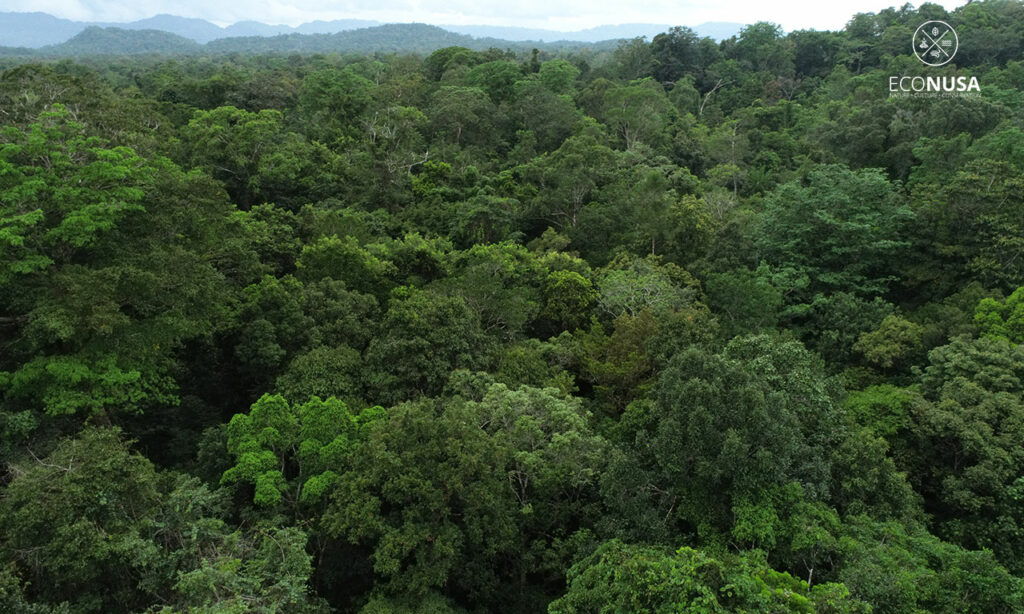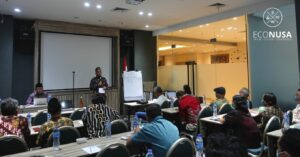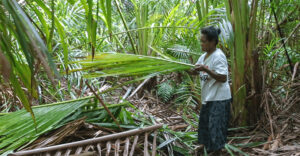
Papuan forests are deemed the only Indonesian forests with the highest level of biodiversity in the world with thousands of fauna species, hundreds of birds types, hundreds of mammalian and reptilians. As the local community forests have overarching meaning as it is only the source of the indigenous peoples’ livelihood. For the reason, the local peoples struggle to protect their forests through, among others, local wisdom.
Moi tribe in Sorong Regency, West Papua, agreed a traditional directive to manage forest resources. The directive is traditionally called egek. It is traditional conservation that bans the utilization of natural resource at certain area at certain period of time.
Malaumkarta Young Generation Association (PGM) chairman, Torianus Kalami, said the declaration of forest egek was done on March 16, 2021, in commemoration of Forester Dedication Day. PGM also invited Sorong Regency’s Natural Resources Conservation Agency, Sorong Police Precinct, Sorong Military District Command and Marine 3 Squad.
Read also: Regulation Holding Up Tradition Knowledge
“We made forest egek to ban hunting devices such as air rifle and fire rifle. Bird, snake, tree kangaroo or lau-lau are among the no-hunting animals including some types of orchids are also prohibited. All must not be hunted at all. Only wild boar and deer are allowed for hunting as they are for public consumption,” said Torianus.
The local community gave positive welcome to the enactment of forest egek. Two weeks after implementation, Torianus said, there was no one hunting a tree kangaroo that passed by under the local bridge nearby local residence. “The locals do not dare to do it as we had a deal. Even the six-year-old son of Malaumkarta Village Head, Jefri Mobalen, understood that those animals must not be captured. It means our message is well delivered,” said Torianus.
The traditional directive here has been enacted in three customary areas as from 14 clans in Malaumkarta Raya, namely Kalami Malagufuk, Kalami Kinipilik and Malasamuk clans. Those three customary areas are the living examples to the other clans.
Read also: Malaumkarta Requires Next Generation to Revive Tradition
On the other hand, PGM and some partners are conducting customary land mapping at Malaumkarta Raya. When it is accomplished, PGM will call for other clans to perform forest egek. Torianus considered that the three customary areas are located at the outer ring which is close to main road. This will pose higher risks to biodiversity than the other customary areas. Hunting is one of the biggest threat that will harm the local community.
“The other clans are willing to perform forest egek, but we have not talked about the technical zoning system yet. If there is risk on the already zoning system, there is main road there. One might ride a motorcycle to enter and shoot any target or steal orchid. But we do not worry too much if there is a trespasser going deeper as the place is hidden. It would be hard for a man to pass kilometers away into the areas,” he added.
Malaumkarta Raya consists of 6 villages, namely Malaumkarta, Mibi, Suatut, Sutolo, Wenbulun and Malagufuk. These villages are deemed the buffer zones for the surrounding ecosystem. Torianus mentioned that forests logging for land conversion into palm oil estate in the neighborhood would various kinds of fauna flee to Malaumkarta Raya. One village, Klayili, has lost its forest which is close to Malaumkarta Raya.
Read also: Conserving Cenderawasih in Malaumkarta Raya
“Klayili people for the time being faces hardship to look for their sustenance. They can hardly hunt or should walk kilometers away. But people in Malaumkarta Raya do not have the same fate. Birds, wild boar, deer, kangaroo flee to our regions,” Torianus explained.
Forest egek local wisdom is only one of the plans to secure Papuan forest natural resources, particularly in Malaumkarta Raya. PGM has contacted some universities and called academicians to conduct researches in Malaumkarta Raya. The studies would target not only tourism but also geology study. Sorong is under Sorong Fault Zone as one of the nine active fault zones in Tanah Papua that triggers tectonic earthquake.
Editor: Leo Wahyudi, Nur Afiyah, V. Arnila Wulandani




